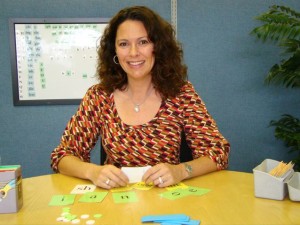
by PRIDE Reading Program Admin | Nov 14, 2014 | A PRIDE Post, Parent-Teacher Conference
Finally it’s parent-teacher conference time and you get that chance to sit down face-to-face with your child’s teacher. You have a lot that you want to talk about, and a limited amount of time. The better prepared you are going into the meeting, the more beneficial the meeting will be for both you and the teacher. Here are some questions you can think about and then ask your child’s teacher at the next upcoming conference to elicit information and make the rest of your child’s year more successful.
How is my child doing keeping up in class?
Start out by asking the teacher how your child is doing overall. Is he or she ahead, behind, or right on target indicated by grades compared with the average student at the national level? You might want to gain information about this level your child is at. Also ask the teacher if she or he feels that your child will remain at this level- and why.
What information and skills will my child be expected to accomplish by the end of the year?
All children, whether struggling, average, or gifted need to meet higher academic standards and expectations in school. Ask the teacher what your child will have mastered by the end of the school year in reading, math, science and social studies. If your child has already achieved those goals, ask the teacher if there are more challenging academic standards in place in this classroom. If the teacher answers “yes” then ask to please see these. If your child is struggling with the coursework then discuss with the teacher what specific remediation and support is your child receiving. Again ask to see the specific program and what is actually taking place to assist your child in progressing forward.
How are you assessing and monitoring my child’s progress?
Your child needs to be evaluated and monitored during the entire school year to determine progress, remediation needs and advancement of subject areas. During your conference ask your child’s teacher what kind of information he or she is using to evaluate your child and how often these assessments are conducted.
As a parent, what can I do at home to stay involved in my child’s academic progress?
Studies have shown that children who receive regular educational support and encouragement at home do better at school and tend to excel beyond the average.
All teachers welcome and encourage parental involvement, so now is the time to ask how you can help your child at home improve his or her areas of weakness and build on his or her strengths. Ask your child’s teacher to recommend some outside enrichment activities to support his or her learning aside from home and school.
Does my child have friends?
Academics are not the only subjects you will want to discuss with your child’s teacher. Find out how well your child interacts with others, participates in groups and shows value and respect to the teacher and classmates. Talk to the teacher about what you can do to reinforce these qualities, along with what academic lessons you can teach at home to help your child become a more well rounded person.
At the end of the meeting you will want to clarify and summarize all the points discussed during the conference. This way both you and the teacher are better able to develop a mutual understanding and agreement.
Karina Richland, M.A., E.T. is the Managing Director of Pride Learning Centers, located in Los Angeles and Orange County. A former teacher for Los Angeles Unified School District, Ms. Richland is a reading and learning disability specialist. Ms. Richland speaks frequently to parents, teachers, and professionals on learning differences, and writes for several journals and publications. You can reach her by email at karina@pridelearningcenter.com or visit the Pride Learning Center website at: www.pridelearningcenter.com

by PRIDE Reading Program Admin | Sep 3, 2014 | A PRIDE Post, IEP
PREPARE FOR THE NEW SCHOOL YEAR
As you and your child await the beginning of a new school year, now is the time to review your child’s IEP and determine whether the IEP proposed at the IEP meeting held last school year is appropriate for the new school year. Children, especially younger children, can transform during the summer; physical development, new experiences and opportunities to engage with other children during the summer can significantly impact a child. Before your child begins school, carefully review his/her IEP and determine whether changes are in order.
If you believe revisions should be made, clearly identify concrete examples of how your child has changed. For example, stating, “My child is talking more” is not as helpful as, “This summer, my son starting using adjectives to describe things. I made a list of the ones I have heard him use and I will provide you a copy.” You should also identify what specific changes you are seeking.
Asking for “better goals” or “more services” will leave school staff confused, whereas, asking that a goal be developed in a certain area or that your child receive a particular service will allow your requests due consideration. A school district must provide a detailed response to parental requests to a change an IEP. If the changes are simple, you may be able to make those changes through an IEP Amendment without the necessity of a meeting. However, you are always better served to make a written request for an IEP meeting and cancel the meeting if it is not needed rather than request a meeting at the last minute. In California, a school district is required to convene an IEP meeting within 30 days of receiving a written parental request for an IEP meeting (prolonged periods where school is not in session generally do not count towards those 30 days). Ca. Ed. Code §56343.5.
EVALUATE AND PROVIDE INFORMATION
If parents find that changes in their child warrant changes to their child’s IEP, they should not hesitate to make their concerns and requests known to their school district. (One way to determine whether changes need to be made to the IEP is to mentally walk through the child’s school day to visualize how the child is doing across a wide array of settings, activities and events, and see whether the IEP provides the appropriate level of support for the child.) If you request an IEP meeting, prepare well for the meeting. Carefully review the IEP so you can specifically focus on your areas of concern. If you have documented information that your child has changed, provide it to the IEP team. Parents are also permitted to bring anyone they believe may have “knowledge or special expertise” regarding their child to the IEP meeting. Ca. Ed. Code §56341(b)(6).
THINGS TO LOOK FOR AS YOU REVIEW YOUR CHILD’S IEP
- How has my child’s performance across activities, settings and events changed?
- Are the components of the IEP prepared last school year appropriate for the new school year?
- Should I request an IEP meeting to make changes to the IEP?
- What documentation can I provide that will demonstrate the changes in my child and/or how the IEP should be changed?
- Are there professionals or other individuals with specialized knowledge regarding my child that I should invite to the IEP meeting?
Michael E. Jewell graduated from Brigham Young University Law School and has been a practicing attorney for more than twenty years. He may be contacted by calling (714)-978-0110, emailing mjewell@jewellawoffice.com or on the web at www.jewellawoffice.com.
He has represented parents of children with all types of disabilities from autism through specific learning disability and traumatic brain injury and has represented parents in IEP meetings throughout the State of California. He has presented to both parent groups and professional groups. He has represented families at mediation, in due process hearings and in the United States District Court. Mr. Jewell has argued before the 9th Circuit Court of Appeals.
Mr. Jewell is married and the father of three children. He lived in Argentina for two years and is fluent in Spanish.

by PRIDE Reading Program Admin | Jul 8, 2014 | A PRIDE Post, Autism, Reading Comprehension
Reading comprehension help for students with autism may requires a few strategies that YOU the parent or teacher can easily do at home or in the classroom. Studies consistently show that children who are encouraged to use visual imagery have improved performance on tests of comprehension and recall of materials. For many children with autism, this skill of using mental imagery in text is an extremely challenging task. Nevertheless, this method can be taught and mastered.
Reading Comprehension help for students with autism involves VISUALIZATION. This is one of the most effective ways to help improve reading comprehension in a child with autism. How do you teach this? Well …. try to encourage the child to form mental pictures of the events described in the stories read.
TEACHING VISUALIZATION…
An autistic child struggling with reading comprehension will benefit from a teaching method geared to make sure that he understands and thinks about word meaning as he reads and that provides a specific scheme for visualizing. For example, a teacher might stop a student after reading a few lines and encourage the student to form a mental picture with a question such as “what do you think that looked like?” This allows the student to build imagery directly related to the concepts conveyed in the reading and at the same time to continue to focus on the printed symbols on the page.
- Use prior knowledge and pre-reading strategies. “Look at the title. Think about what the story might be about.”
- For stories, the student can visualize what is happening at the beginning, middle, and end of the story. “Read or listen to the first few sentences. Remember to get a picture in your head for each sentence. Do not continue until you get a moving picture in your head, kind of like a movie.”
- For informational text, student can think about key words and visualize the content they are learning. “Read or listen to this paragraph. Remember to get a picture for each sentence. Ask me if you do not understand a word.”
- Students should be asked to explain their images. “Can you describe what you see as you are reading.”
- Students should compare the picture in their minds with what they are reading. “Tell me as much information as you can remember.””
Integrating the child’s own artwork with story reading, such as having the child draw a map or diagram of events, or represent the story in cartoon form, is also useful. They can also read an entire passage and then create an illustration that represents the main idea of the paragraph. To help the child decide which ideas are most important, provide them with some guidelines: “If this story were to be made into a movie, which scenes absolutely must be included for the story to make sense. Which scenes would be funny, sad, etc.”?
Reading Comprehension help for students with autism involves your help and guidance in teaching visualization strategies. Good Luck – and let us know how they worked!
__________________________________________________________________________________________________

Karina Richland, M.A. is the Founder of PRIDE Learning Centers, located in Los Angeles and Orange County. Ms. Richland is a reading and learning disability specialist and speaks frequently to parents, teachers, and professionals on learning differences. You can reach her by email at karina@pridelearningcenter.com or visit the PRIDE Learning Center website at: www.pridelearningcenter.com

by PRIDE Reading Program Admin | Apr 29, 2014 | A PRIDE Post, Executive Functioning Skills
Executive functioning has become a very popular term in recent years, especially as it relates to treating children. In the past, diagnosis involving children’s attention, activity level, organizing and problem solving were made. However often little was discussed with parents regarding improving deficits, executive functioning, using behavioral techniques.
Executive functioning (also known as cognitive control and supervisory attentional system) is an umbrella term for the management (regulation, control) of cognitive processes, including working memory, reasoning, task flexibility, and problem solving, as well as planning and execution. It has also expanded to include organization and impulse control. Executive functioning affects not only children’s behaviors but expands to social abilities and their ability to learn. It includes their ability to self-regulate, to infer and ponder consequences, to encode information in memory.
What we deem largely as automatic, or multi-tasking, is often a skill that needs to be modeled and taught. Children can benefit from working on executive functioning whether they are typically developing, or have clinical diagnosis that includes impairments in these areas. Think about the things that cause stress in your home. Perhaps you begin to worry time and time again when your son doesn’t call you after baseball practice only to find out later he forgot to charge his phone. Perhaps your high school daughter realizes she has a project due the night before it is to be turned in, or maybe you have numerous calls from your child’s teacher with regards to forgetting materials, including books, pencils, homework. Many times, parents can be frustrated in the lack of executive functioning skills if they themselves have relative strengths in these areas. On the flip side, on many occasions when parents have difficulties in the same areas of executive functioning as their children, they sympathize with the children, and lack an understanding of how to help them other than to offer commiseration.
One of the greatest things parents can do to assist in helping their children grow in this area is scaffolding. Scaffolding is a teaching method that enables an individual to achieve a goal or task under adult guidance, or more capable peers. It is important to know what appropriate expectations would be, given your child’s developmental level. For instance, you wouldn’t expect your children to pack their own lunch at 3 years old.
Ways to increase executive functioning
- Identify situations that cause inattention or frustration (identifying situations that make your child or adolescent stressed. Bringing this to their attention will help you both problem solve alternative behaviors to make the situation easier).
- Change tasks frequently to decrease drain on working memory
- Frontload information especially when task is novel or not routine (practice a song that will be sung in the classroom or go over key points in a chapter that will be discussed in class before the teacher presents material)
- Cue your child to complete a task when in the same environment (i.e., ask children to clear their plate in the kitchen)
- Offer breaks that allow for physical activity
- Create a structured environment whenever possible
- Pair tasks your child has mastered with those that are new or more of an energy cost
- Encourage thinking of future scenarios (discussing an upcoming assignment or event with a child gives them the opportunity to collect appropriate materials and create a timeline).
- Underline key concepts when reading (parent or child should underline or highlight main points being read. When answering questions, read questions first, then material).
Dr. Robin Morris is a Clinical Psychologist. She holds a Masters in Family and Child Therapy and a Graduate Academic Certificate in Applied Behavior Analysis. Dr. Morris resides in Mission Viejo where she conducts psychoeducational assessments, school/home observations used to determine appropriate placements and services, as well as functional Behavior Assessments. you can contact her at (949) 351-3770 or email her at drmorris05@yahoo.com. Visit her website at drrobinmorris.com

by PRIDE Reading Program Admin | Mar 26, 2014 | A PRIDE Post, IEP
Walking into an IEP is nerve-wracking. You’re thinking about what goals your child needs, the services that are essential, and the staff that will be most resistant to working with you. In fact, many parents are highly focused on the services that will be provided and lose sight of the purpose of the annual goals. Too often, parents readily breeze through goals in order to get to the meat of the IEP – placement and services. Similarly, parents often know why they want services, and they know their child’s unique needs, but they aren’t as versed in how the law obligates the District to provide the services. Using the right language can avoid common pitfalls that allow a District to reduce or eliminate services.
Annual Goals
The most important thing to remember about the goals is that they are annual goals. Making sure you have goals in all areas of need and that they are measurable is important, too. But none of that matters if the District sets the bar so low that any student could achieve the goal.
When thinking about goals, it’s important to consider where you want your child to be a year from now. Often, a school district will propose a goal that merely works on the next logical step, rather than where the child should be in a year. For example, I had one case where a young child had mastered single digit addition. The school district’s proposal? Addition of two digit numbers. While that is a worthy objective, it should not be an annual goal. If a child who can already do single digit addition spends all year and only learns that same skill with two numbers, rather than learning to subtract or multiply, it can hardly be said that he has made meaningful progress.
One tactic to think about is what other kids will be learning in his or her grade level. If your child is in second grade now, he or she will be a third grader at the next annual. So what does a typical third grader learn? Even if your child is a grade level behind, you want them to make meaningful progress. So if they are at the first grade level now, you want to at least shoot for a second grade level goal. Tying annual goals to grade levels is a good way to ensure that progress will be made.
Legal Lingo
When it comes to services, you should be aware of what the law requires – and what it doesn’t. Legally, the District must provide sufficient services for your child to get “some educational benefit” or “some meaningful benefit” from the education. In other words, it has to be enough for your child to make progress on goals. Some courts have compared it to a high school student progressing with about a C average.
Federal law, and the courts agree, does not require “best” services or services that would “maximize a child’s potential.” If you go in asking for the “best,” the District might even agree that what you are asking for is best, but will be well within its right to cut those services down. Instead, ask for what you want, but call them “appropriate” services. Anything less is “inappropriate.” While those words won’t magically sway the District, they will keep you from falling into the common parental pitfall of asking for the “best” – and then being promptly denied.
_________________________________________________________________________________________________

Drew Massey, Esq. graduated magna cum laude from Pepperdine Law School in 2006. Since that time, he has represented children and families with special needs in obtaining the necessary services so children can learn. You can reach him at (714) 698-0239 or email him at: DMassey@edattorneys.com or visit the Adams & Associates, APLC website at: https://californiaspecialedlaw.com

by PRIDE Reading Program Admin | Mar 18, 2014 | A PRIDE Post, Reading Disability
Intervene early! Reading disabilities are considered to be the most common learning disability and are often not diagnosed or treated until it is too late for easy recovery. A child with a reading disability that is not identified until the third grade or later is already years behind his or her classmates. This is a gap that must be closed if the child is ever to catch up with his or her peers. The best intervention is in kindergarten or remediation beginning in the first grade.
Teach phonics. Through phonics, children learn to associate sounds and form connections to word recognition and decoding skills needed for reading. Research clearly proves that phoneme awareness performance is a major predictor of long- term reading and spelling success. In fact, according to the International Reading Association, phonemic awareness skills in kindergarten and first grade appear to be the most important predictor of successful reading acquisition.
Teach spelling. Spelling and reading rely on the same mental representations of a word. The correlation between spelling and reading comprehension is high because both depend on proficiency with language. The more profoundly and methodically a student knows a word, the more likely he or she is to recognize it, read it, spell it, write it, and use it appropriately in speech and writing.
Teach writing. Start teaching writing in preschool and kindergarten. Learning to write engages the brain in repetition and memory on how letters and sounds reflect meaning, addresses numerous reading and cognitive skills, and helps activate both reading and spelling areas of the brain.
Teach handwriting. Technology is a fun writing tool for kids but it doesn’t engage the early reading brain in the same helpful way as learning to move the pencil across the page to use letters as images of sound. Brain scan studies show that early lessons in letter formation help activate and coordinate reading connections in the brain.
Repetition, repetition, repetition. The brain of a child feeds on repetition to make doing things such as reading automatic and fluent. Use repetition in the early grades for reading aloud, for rhyming, for matching letters with sounds, for writing alphabet letters, for spelling, for sounding out words, for automatic reading of sight words, for making meaning in print. Children thrive on it. So make it fun!
Don’t ever give up on your child. Keep the expectations of your child and their reading future high. We owe it to our children to show our support, give them every resource possible to help them and give them the skills necessary for learning and communicating throughout their education and their lives.
________________________________________________________________________________________________________

Karina Richland, M.A. is the Founder and Director of PRIDE Learning Centers, located in Los Angeles and Orange County. Ms. Richland is a certified reading and learning disability specialist. Ms. Richland speaks frequently to parents, teachers, and professionals on learning differences, and writes for several journals and publications. You can visit the PRIDE Learning Center website at: www.pridelearningcenter.com









